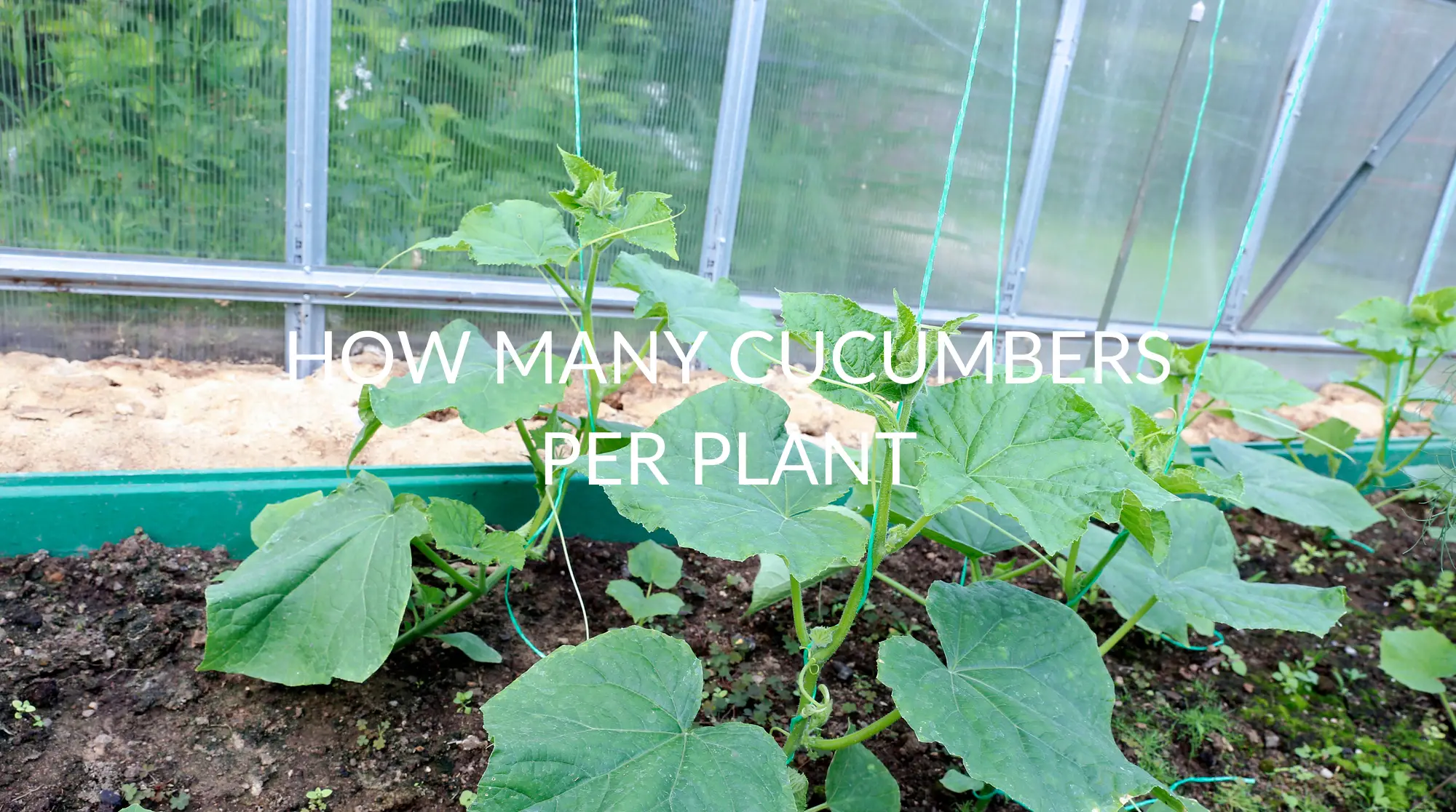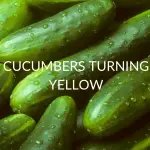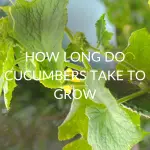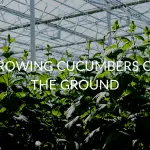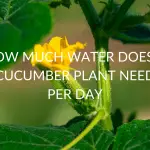Cucumbers are a delicious fruit to add to salads, blended drinks, cooking, pickling, and much more. With a lot of water and a warm environment, your yields can be huge. But just how many cucumbers can one plant produce?
Depending on plant variety and conditions in your garden, one cucumber plant usually contains 10 fruits. This number can be as high as 20 in special circumstances. That’s a total harvested weight of about 2 to 3 pounds per plant.
Larger varieties produce an average of 10 fruits weighing roughly 6 ounces each. In comparison, smaller varieties can produce about 15 fruits weighing 2 to 3 ounces. Fruit production depends on the cucumber variety you plant and various environmental factors.
In this article, you’ll learn more about how to plant cucumbers effectively, how to increase cucumber yield and the best varieties. We’ll also cover what to avoid when growing your cucumber plants.
How Many Pounds of Cucumbers Per Plant?
Cucumbers can either be extremely small or super large. So, just how many pounds of cucumbers are there per plant? Different varieties produce different numbers of cucumbers. Typically, commercially available varieties produce around 5 pounds of cucumbers for each plant. Heirloom cucumbers produce closer to 2 or 3 pounds per plant.
The conditions in your garden will have a large effect on your ability to grow healthy, high-yield cucumbers. These conditions include things like soil quality, season, temperature, and the level of pollination in your garden. With a healthy plant, you can yield up to 5 pounds of fruit. So if you want to eat cucumbers all summer long but don’t want to spend all day picking them off their vines, consider planting more than one plant!
Frequent harvests allow the fruits to mature quickly. Timely harvests keep the plants productive since these plants have a limited number of cucumbers they can support at a time. If cucumbers are grown in healthy conditions, they can create several fruits over a few weeks. Next, we’ll learn how many times a cucumber plant produces.
How Many Times Does A Cucumber Plant Produce?
It depends on the variety of cucumber, but generally speaking, cucumber plants produce about three to four times a year. A cucumber plant can produce about 20 cukes in one growing season, but that number can vary depending on the size of your garden and the length of your growing season.
Cucumbers are annual plants that produce fruits called cucumbers during the current season’s growth. The plant can produce multiple times in a single growing season. Cucumber plants can produce up to three crops in a season.
Cucumbers complete a lifecycle from germination to harvest within one season. A cucumber plant produces 35 to 60 days after being transplanted into the garden. A plant will yield roughly 10 fruits per plant during its entirety of life span of 70 days. The first cucumbers are ready for harvest about 70 days after planting, and you can expect to get a few more harvests from the plant before it dies back in late fall or early winter.
Cucumber plants produce fruit fairly quickly, being properly looked after and kept safe from disease and insects. They typically produce for roughly 3 months before dying. Luckily you get a whopping 10 fruits per plant–enough to feed an entire household. They grow annually, meaning the plant does not regenerate after the growing season.
Being that cucumber plants can produce multiple times, it’s best to make sure you know what decreases and increases a yield. You can extend the growing period if done indoors, in a greenhouse, or in a pot if covered with plastic. However, this leaves your cucumber plants at risk of lower production.
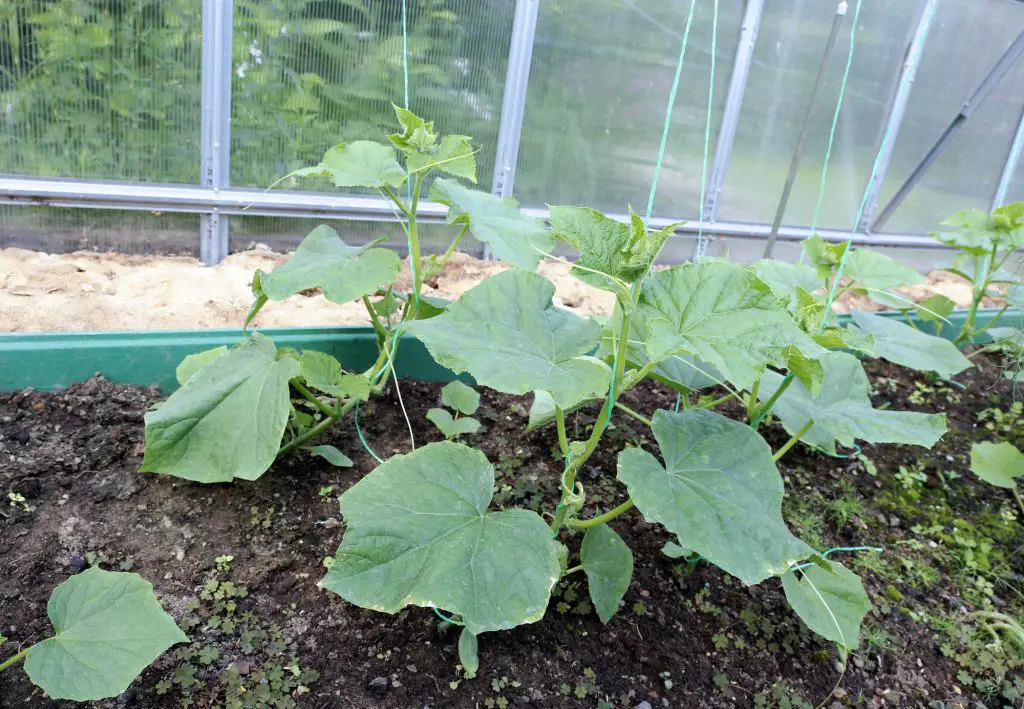
What Causes A Decreased Yield?
The quality of care that you give your cucumber plants will help to determine the amount of fruit you grow. Important factors are temperature, watering, fertilizing, and pruning. Avoid letting soil stay dry for too long. If you find that you have a problem with the soil, check out how to treat dry soil.
The most common cause of decreased yield in cucumber plants is water stress. Cucumbers are very sensitive to water stress, so it’s important to keep the soil moist at all times. If your plant is getting enough water, but you’re still seeing a reduced yield, then nutrient deficiency could be the culprit.
With all the ways that can be effective when growing your cucumber plants, there are a few things to keep in mind. Be careful and watch out for these different problems that can hinder your cucumber growth:
- Lack of water
- Too much or not enough fertilizer
- Insects and disease
- Root rot caused by soil-borne fungi or bacterial diseases
- Not enough sunlight
Now to get to the good part, you’ll find out exactly what increases a cucumber yield. Read along to learn the best tips and tricks during the harvesting season.
How To Increase Cucumber Yield
Cucumbers are a favorite summertime vegetable, but they can be difficult to grow. The best way to increase your yield is by choosing the right variety and planting them in an area that gets plenty of sunlight. All you need to do is follow these tips, and you’ll be enjoying fresh cucumbers in no time.
- Cucumber plants are best planted in rows 2 feet apart, with 2 feet between the plants in each row.
- You can plant your cucumber seeds directly into the ground if you prefer not to use a container, but this method takes longer for the plants to reach maturity.
- Remove any weeds or grass from around your cucumber plants before planting, as they will compete with them for nutrients and water.
- Water your plants regularly after they’ve been planted so they don’t dry out while getting established.
- Make sure the soil stays moist but not soggy.
- A sprinkler can be an effective way to make sure your Cucumbers get water at all times. It’s a convenience and not a necessity, though.
Cucumber plants are vine crops that require a lot of space between other plants. Their vines can reach up to 8 feet long or more. Make sure when planting that all frost has passed and the soil begins to warm.
Giving cucumbers the right support will ensure their vertical growth and a greater yield. You can use a trellis, strong bamboo sticks, or even your balcony railings to give them support. Trellising is a good way to save space in the backyard and allows your plants to climb. The large leaves on a cucumber plant provide shading for the developing fruits.
Fruits should be removed from their vines as soon as they reach their ripe stage. This will enable the cucumber plants to continue growing and producing fruit for as long as the season allows. Cucumbers should be held in chilled rooms, but still above 50 degrees Fahrenheit or the fruit could become a victim to pitting and color changes. (that’s one of the reasons why you might see brown or yellow spots on your cucumber leaves)
What Are the Best Varieties Of Slicing Cucumber To Grow?
When you’re looking for the best slicing cucumbers to grow, there are lots of things to consider:
How much space do you have? You can choose from dwarf varieties that can be grown in containers or small spaces or full-sized varieties that require more space and time. You’ll also need to consider whether or not you want to pickle your cucumbers. If so, look for a variety that’s good for pickling.
Exactly which flavor do you prefer? Some Slicing cucumbers have a mild flavor, while others have a more intense flavor and texture. If you’re looking for something milder, try one of the less-tender varieties like ‘Sugar Baby’ or ‘Booth’s Pole.’
There is a variety of slicing cucumbers to grow in the harvesting season. Cucumbers for slicing are best with a sweeter texture, smaller seeds, and thinner skin.
A few choices of the best varieties include:
- Greensleeves
- Marketmore
- Straight Eight
- Sweet Success
- Straight Eight Cucumbers are a slicing cucumbers that produces 6 to 8 inches long and mature in 58 days.
- Salad Bush cucumbers also grow 6 to 8 inches but have a spread of 26 inches.
Summary
If you’ve ever planted a cucumber before, you know how rewarding it is to grow your own. Whether it’s for fresh eating or pickling, cucumbers are a great addition to any garden.
Now you have a good idea of when your cucumber plant will produce fruit and how much you can expect. With one plant yielding around five pounds of fruit, the production is ultimately satisfying. In fact, a cucumber plant that produces a picking variety provides enough fruit for a quarter of a quart of pickles.
Cucumbers are a cool-weather crop that can be grown year-round. They like full sun and well-drained soil. They’re a great way to add some extra crunch to your meals, and they’re also a good source of fiber. Plus, they’re low in calories and sodium! Simply follow the steps above, and you’ll be harvesting cucumbers in no time.

